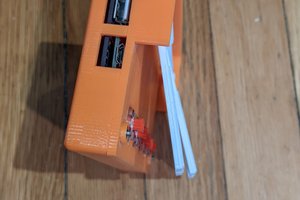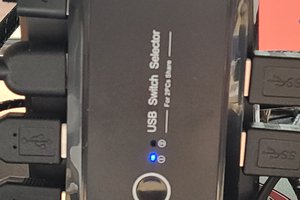- Developed using CircuitPython, friendly and easy to learn
- Compatible with the most common operating systems
- No need to install apps for initial firmware download
- Key configuration done in a text file
- Splash resistant and shockproof
- Detachable and replaceable pedals
- Built using hardware prototyping system
- Powered by USB, no additional power source needed
USB Pedal based on Rpi Pico
USB pedals (or any other momentary switches) who emulates keyboard keypress or combination of keys. Handy to use with video edition software
 alberto nunez
alberto nunez

 Russ Nelson
Russ Nelson
 Johnny
Johnny
 WJCarpenter
WJCarpenter
 Le Thanh Hiep
Le Thanh Hiep